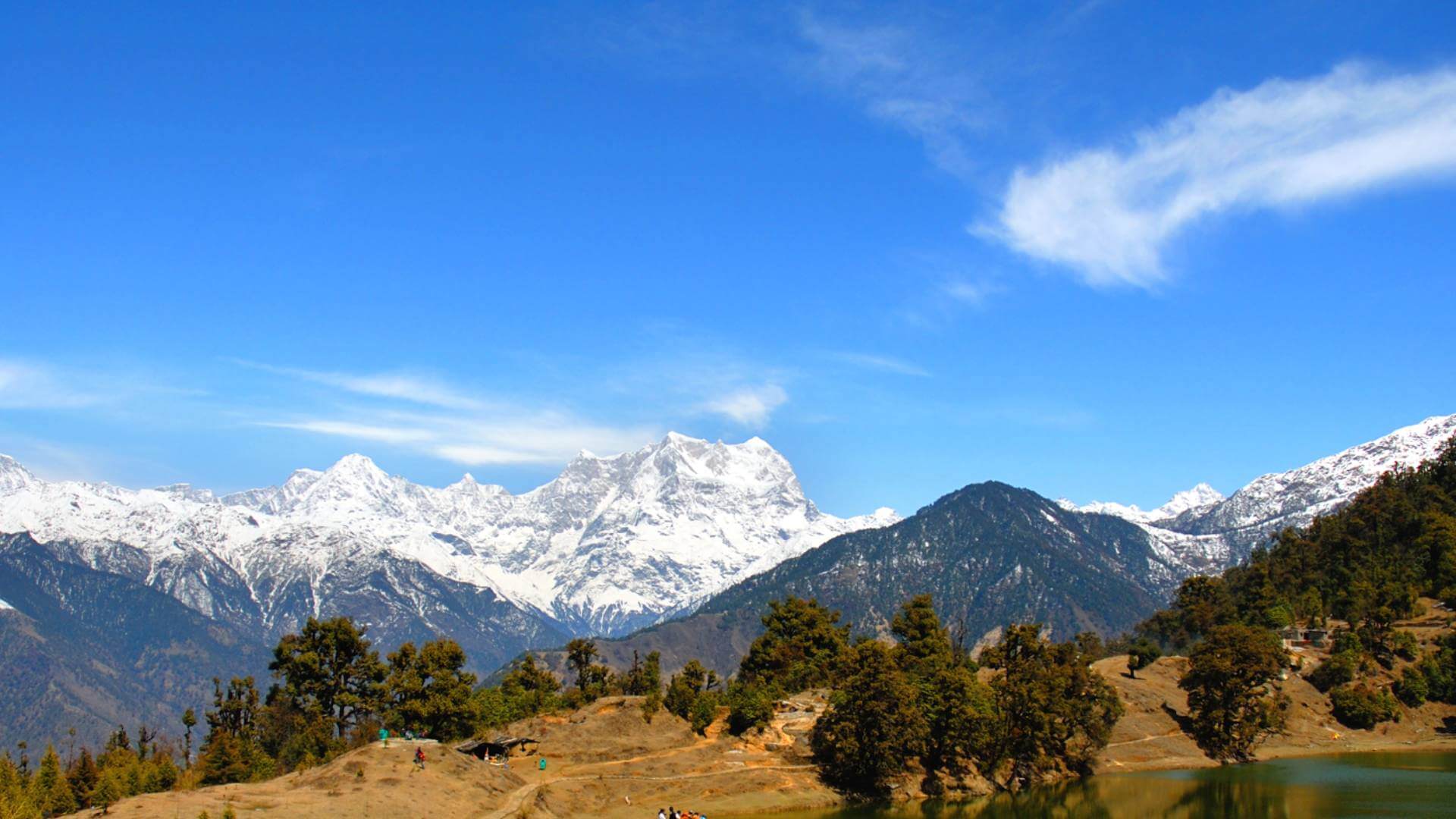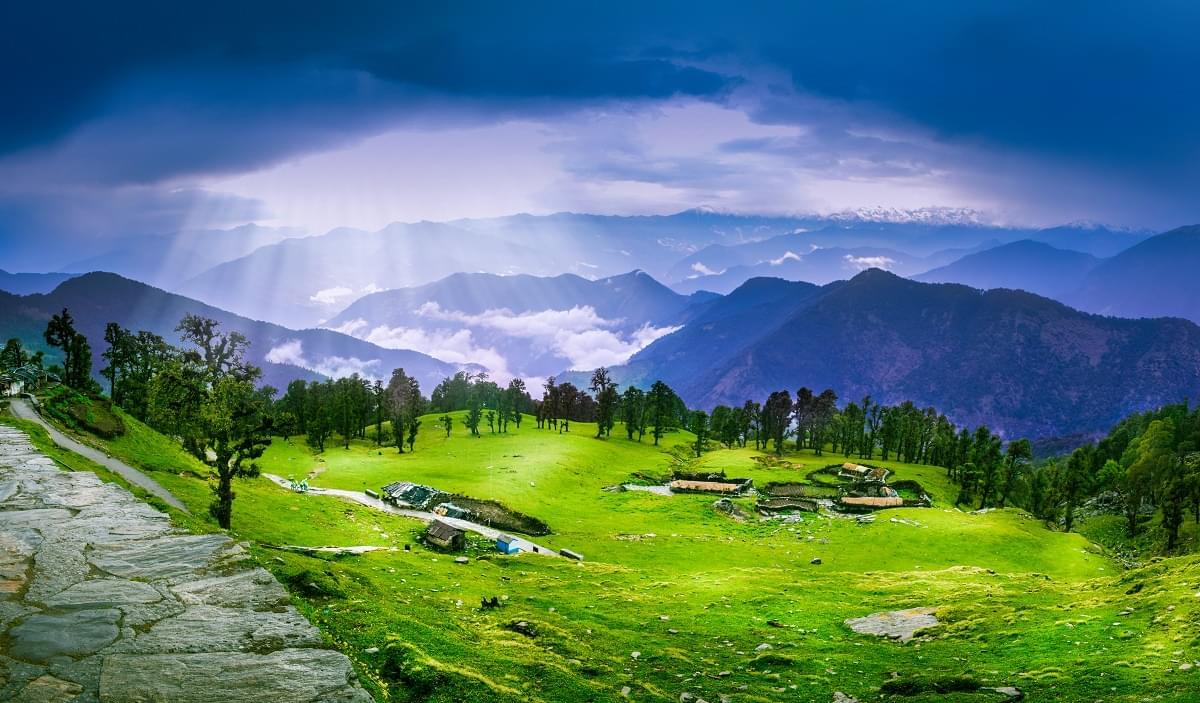chopta tungnath trek
Published on December 18, 2024
The Chopta Tungnath trek is a remarkable adventure nestled in the Garhwal region of Uttarakhand. This short yet enchanting journey, covering approximately 5 km, is typically completed in 3 days and is well-suited for trekkers with a moderate level of fitness. The trek begins from Chopta, a picturesque village renowned for its breathtaking landscapes and serene environment. Surrounded by dense forests of oak and rhododendron, lush meadows, and towering peaks, Chopta serves as the perfect starting point for this Himalayan escapade. Its pristine beauty and tranquil ambiance make it a haven for nature lovers and adventure enthusiasts alike, offering an unforgettable experience amidst the majestic Himalayas.
Chopta is a small hill station known for its beautiful sunsets and green landscape. As you start the trek from Chopta, you will walk through thick forests, colourful flowers, and wide-open fields. One of the first highlights you will come across is Deoriatal Lake. This lake is very special because it reflects the big mountains around it, creating a beautiful scene that is perfect for pictures.
Next, the trail leads you to the ancient Tungnath Temple Trek, which is at an altitude of 3,680 meters (12,073 feet). This temple is very important because it is the highest Shiva temple in the world and is part of the Panch Kedars dedicated to Lord Shiva. The temple is over a thousand years old and attracts many devotees, making it a special place to visit.
After visiting Tungnath, the trek continues to Chandrashila Summit Trek, which is 4,000 meters (13,123 feet) high. From the top of Chandrashila Summit, you can see amazing views of the Himalayan mountains, including Nanda Devi, Trishul, Chaukhamba, and the Kedar Range. The sunrise from Chandrashila is especially beautiful, with the sky turning shades of orange and pink.
The Chopta Tungnath trek is considered moderate, so it is good for moderately fit people. The base camp at Chopta is where the trek starts and ends. This trek is a great mix of adventure, nature, and spirituality. You will walk through beautiful forests, see amazing views, and visit special places. The Chopta Tungnath Trek is a perfect way to experience the beauty and peace of the Himalayas, creating unforgettable memories for everyone who goes on it.
Things to carry
- Clothing:
- Trekking Pants and Shorts: Select loose-fitting, quick-drying ones that ensure comfort to your limbs during the trek.
- Warm hat and gloves: Very important on colder days, especially during early morning and night.
- Footwear:
- Camping boots: should be a good pair of boots or other sneakers with nice grip comfortable make sure they doesn't slip while trekking
- Camping Equipment:
- Sleeping bags: Choose a quality sleeping bag that is suitable for the expected temperature.
Safety & Security
Some safety advice should be remembered:
- Plan and Research: Make sure you fully understand the trek’s itinerary, weather, and degree of difficulty. Make a plan for your trip and let your loved ones know. Get the proper licenses and make sure you possess the abilities and information needed for the hike.
- Weather Awareness: Pay careful attention to weather reports and be ready for unforeseen changes in the weather. If you want to go outside in inclement weather or snow, bring layers of appropriate clothes, including windproof and waterproof items.
- Acclimatization: Give yourself a chance to properly adjust to the altitude. To lessen the chance of altitude-related ailments, ascend gradually and take rest days at intermediate campsites to allow your body to acclimate to the changing altitude.
- Select Skilled Guides: Hire knowledgeable trekking companies or guides with firsthand knowledge of the Tarsar Marsar area. They can guarantee your safety, offer insightful advice, and help you overcome any obstacles in your path.
- Physical Fitness : Prior to the walk, keep up a decent level of physical fitness. Exercise frequently and take part in activities that increase your stamina to get your body ready for the physical
- Keep Yourself Hydrated: To stay hydrated during the hike, sip lots of water. Fatigue, headaches, and other altitude-related problems might result from dehydration. To guarantee a clean supply of drinking water, always carry a water filter or tablets for water purification.
- Precautions: Follow the safety instructions that your trekking agency or guides have given you. Be mindful of your surroundings, abide by route signs, and stay off of unmarked or shortcut paths. To reduce the chance of becoming lost or coming across dangerous terrain, stick to well-established pathways.
- Emergency Communication: Keep a fully charged cell phone with saved emergency numbers on it at all times. Bringing extra batteries or a portable power bank is also advised. Learn the accessible communication channels and emergency protocols for the trekking area.
- First Aid Kit: Always keep a fully equipped first aid kit on you, complete with basic medical supplies and any prescription drugs you may need. Know how to administer first aid, and let your trekking partners and guides know about any allergies or any medical issues you may have.
- Travel Insurance: Obtain travel insurance that includes coverage for medical evacuation and emergency assistance in the event of a journey. Make sure the policy includes coverage for the Tarsar Marsar Trek’s unique activities and altitude.
- Respect Local Culture: Honor regional culture: Observe the regional customs, traditions, and culture. Before taking pictures of residents and their properties, get permission. Dress modest clothing and be careful of cultural sensitivity.
Highlights of Chopta Tungnath Trek
-
Tungnath Temple:
At an altitude of 3,680 meters, Tungnath is the third of the Panch Kedars. The temple's rich history and serene location make it a spiritual retreat for pilgrims and trekkers alike. -
Chandrashila Summit:
Standing at 4,000 meters, the Chandrashila Trek offers unparalleled views of the Himalayan peaks, including Nanda Devi, Trishul, Kedarnath, and Chaukhamba. -
Scenic Beauty:
The trek takes you through rhododendron forests, lush meadows, and pristine trails with a rich variety of flora and fauna. -
Accessibility:
The trek is relatively short and suitable for beginners, making it an ideal choice for a quick Himalayan getaway.
The Trek Route
1. Getting to Chopta
Most trekkers begin their journey by reaching Chopta, a small hamlet located in the Rudraprayag district of Uttarakhand. If you're planning the Tungnath Chandrashila Trek from Delhi, you can reach Chopta via Haridwar or Rishikesh by road. Chopta tour packages often include transportation and accommodations.
2. Chopta to Tungnath Temple
- Distance: 3.5 km
- Duration: 3-4 hours
The trail from Chopta to Tungnath is well-marked and moderately steep. The route passes through alpine meadows and offers glimpses of the surrounding peaks. Along the way, small tea stalls provide refreshments to trekkers.
3. Tungnath Temple to Chandrashila Summit
- Distance: 1.5 km
- Duration: 1-2 hours
The trek from Tungnath to Chandrashila is steeper but rewarding. As you ascend, the view becomes more spectacular, culminating in a 360-degree panoramic vista at the summit.

Is Chopta Tungnath Trek Safe?
The Chopta Tungnath Trek is one of the most popular treks in Uttarakhand, offering trekkers a chance to explore pristine Himalayan landscapes while visiting the sacred Tungnath Temple, the world’s highest Shiva temple, and reaching the Chandrashila Summit for panoramic views of the Himalayas. With its accessibility, moderate difficulty, and breathtaking views, this trek has gained popularity among trekkers of all skill levels. But, like any trek in the Himalayas, safety is a critical consideration.
Safety on the Chopta Tungnath Trek
The Chopta Tungnath Trek is considered relatively safe for trekkers, including those who are beginners or new to high-altitude trekking. The trail from Chopta to Tungnath is well-defined, and the route is marked with signposts, making it easy to follow. The trek does not require technical climbing skills, and the ascent is gradual, allowing trekkers to acclimatize as they go higher.
However, certain factors need to be considered to ensure a safe experience:
-
Trekking Season:
The best time to do the Tungnath Chandrashila Trek from Delhi is during the summer months (April to June) and post-monsoon (September to November). In these seasons, the weather is clear, and the trail is accessible. Winter trekking in Uttarakhand, especially from December to February, can be challenging due to heavy snowfall, but it is still manageable if trekkers are properly equipped. During the monsoon (July-August), landslides can be a risk, so it's advisable to avoid trekking during these months. -
Weather Conditions:
The weather in the Chopta Tungnath Trek can change rapidly, especially at higher altitudes. It’s important to be prepared for sudden temperature drops, rain, or snowfall. Trekkers should wear appropriate clothing, carry extra layers, and always have a waterproof jacket. It's also crucial to check weather forecasts before starting the trek to avoid getting caught in unpredictable conditions. -
Altitude Considerations:
Although the Tungnath Temple is located at a relatively moderate altitude of 3,680 meters, trekkers still need to acclimatize, especially if they are not used to high altitudes. Symptoms of altitude sickness, such as dizziness or headaches, can occur. To avoid this, it's best to take the trek slowly, hydrate regularly, and rest as needed. The Chandrashila Summit Trek (4,000 meters) can be more demanding, so it's essential to listen to your body and stop if you experience any symptoms of altitude sickness. -
Physical Fitness:
The Chopta Tungnath Trek from Delhi involves moderate physical effort, and although it is accessible for beginners, trekkers should be in good physical condition to fully enjoy the trek. It is advisable to engage in some preparatory fitness activities like walking or light trekking in the months leading up to your trip. -
Guides and Local Support:
Hiring a guide is highly recommended, especially if you are unfamiliar with the route or trekking in the Himalayas. A knowledgeable guide can provide valuable insight into the local culture, ensure you stay on the correct path, and assist with any issues that arise along the way. Many Chopta tour packages include guides, making the trek safer and more enjoyable. -
Wildlife and Environment:
The trek passes through the Kedarnath Wildlife Sanctuary, which is home to various species of flora and fauna. While encounters with wildlife are rare, trekkers should still exercise caution, respect the natural environment, and avoid leaving food or trash behind that might attract animals. -
Support Services:
Though the trek is relatively accessible, it’s essential to know that mobile network connectivity is limited in the higher reaches of the trek. Therefore, it’s advisable to carry a portable charger. In case of an emergency, it’s important to inform your accommodation or local authorities about your trek plans.

Trekkers’ Experiences and Safety
Many trekkers who have ventured on the Chopta Chandrashila Trek share positive stories about the safety of the trail. For instance, Rohit, a seasoned trekker, recalls, "The trek is relatively easy compared to other Himalayan treks, but the sudden snowfall made it slightly more challenging. I had a guide, and we were well-prepared, so we made it to the summit safely and had an amazing experience."
Trekkers' Stories
1. Anjali's First Trek
Anjali, a 26-year-old solo traveler from Delhi, decided to explore the Chopta Tungnath Trek from Delhi. Nervous about trekking for the first time, she joined a group package.
"I was amazed at how friendly everyone was. The guides of Tourmyholiday were supportive, and I never felt unsafe. The Tungnath Temple was a spiritual experience, and standing at the Chandrashila Summit made me feel on top of the world."
2. Rohit’s Snow Trek
Rohit, an avid trekker, attempted the trek in January when the region was covered in snow.
"The snow made the journey challenging, but it was worth every step. Watching the sunrise from Chandrashila over the snow-covered peaks was magical. I would recommend Tourmyholiday is the best for this trek."
3. Family Adventure
The Sharma family from Jaipur, including two kids and their grandparents, took on the trek during summer.
"We went at our own pace, and the kids loved the adventure. The elders managed well with walking sticks. The entire family bonded over this unique experience. The only words i have after this treks "Thank You Tourmyholiday" for my life best experience."
4. Priya's First Trek Story
Another trekkers' story from Priya, a first-time trekker, highlights the safety measures: "I was apprehensive at first, but with a group and a professional guide, the Chopta Tungnath Trek felt secure. The route was easy to navigate, and we had breaks along the way to acclimatize. The experience was unforgettable, and I felt well-cared-for the entire time."
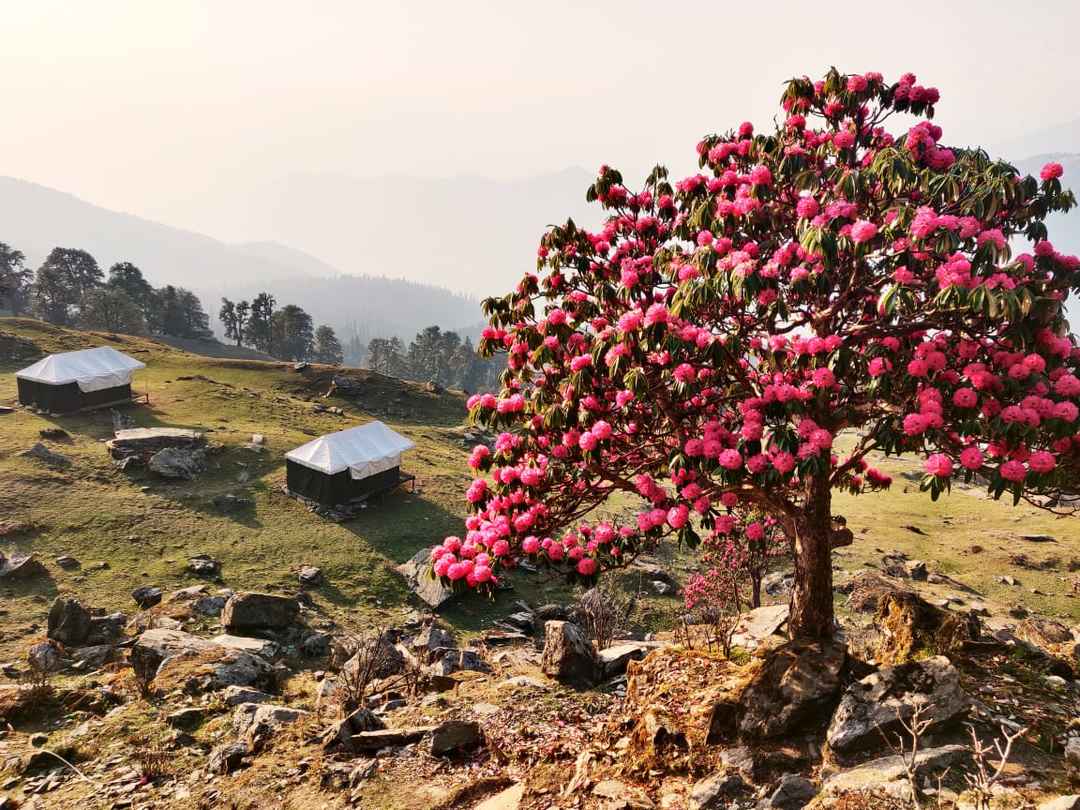
Packing Essentials
-
Clothing:
- Warm layers, even in summer
- Waterproof jackets and pants
- Gloves and caps
-
Footwear:
- Sturdy trekking shoes with good grip
-
Accessories:
- Trekking poles
- Sunglasses and sunscreen
- Headlamp or flashlight
-
Food and Water:
- Carry energy bars, nuts, and water bottles
- Hydration is key during the trek
-
First Aid:
- Basic medical kit
- Any personal medications
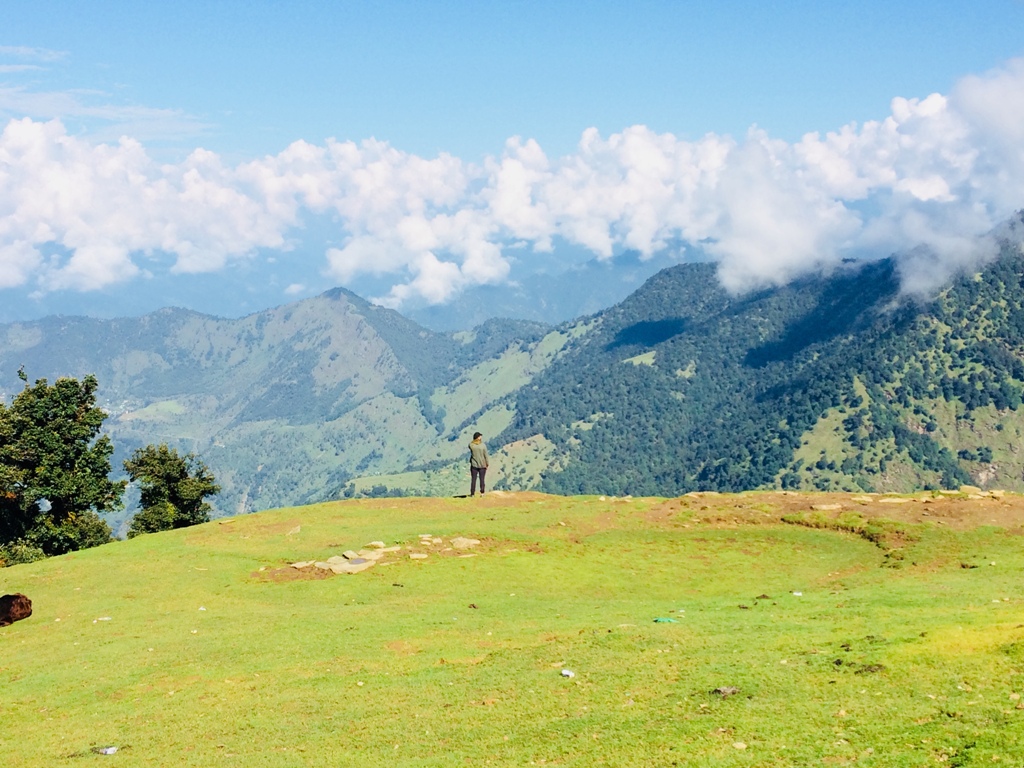
Ideal Time to Explore the Chopta Tungnath Trek
The Chopta Tungnath Trek offers an exhilarating adventure through some of the most stunning landscapes in Uttarakhand. Whether you're a seasoned trekker or a beginner, choosing the right time to embark on this journey can significantly impact your experience. Here's a seasonal breakdown to help you plan your trek effectively.
1. Winter Wonderland: December to February
Winter transforms the Chopta Tungnath Trek into a pristine snow-covered paradise, making it one of the best times for winter trekking in Uttarakhand. The trek becomes more challenging due to the heavy snow, which creates a magical yet demanding environment. The serene, white landscapes and clear skies offer trekkers a unique experience, especially for those seeking adventure in the snow.
Highlights:
- Snow-covered trails leading to Tungnath Temple.
- Crisp mountain air and clear views of the Himalayas.
- Peaceful, crowd-free environment.
Considerations:
- Be prepared for sub-zero temperatures and snowstorms.
- Trekking may require extra preparation, such as proper snow gear and experienced guides.
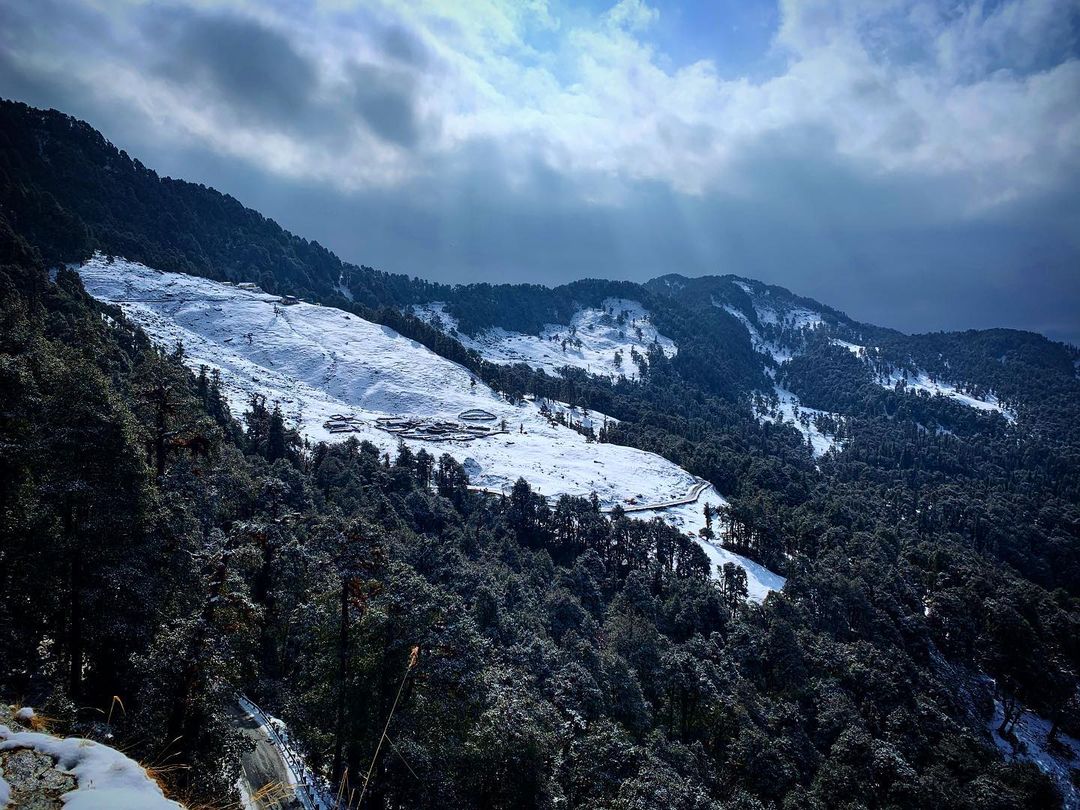
2. Spring Awakening: March to May
Spring is one of the most popular times for the Chopta Tungnath Trek. As the snow begins to melt, vibrant meadows and wildflowers bloom, creating a spectacular contrast against the backdrop of towering peaks. The weather during this period is moderate, with clear skies and a mild temperature, making it an ideal time for those looking for an easier and more scenic trekking experience.
Highlights:
- Lush green meadows and colorful wildflowers.
- Pleasant temperatures for trekking.
- Perfect visibility for panoramic mountain views.
Considerations:
- While the trek is more accessible, the higher altitudes might still have patches of snow, so it’s essential to be prepared.
3. Summer Bliss: June to August
The summer months bring warm temperatures to Chopta, making it a favorable time for those who prefer trekking in milder conditions. The meadows are lush and full of life, with a variety of flora and fauna. However, the summer season also coincides with the monsoon season, so trekking during the monsoon may involve occasional rain and slippery trails.
Highlights:
- Pleasant temperatures ideal for trekking.
- Blooming flora and active wildlife, perfect for nature enthusiasts.
- Ideal for those looking to avoid snow conditions.
Considerations:
- Trekking in the monsoon can be tricky due to rain, slippery paths, and leeches.
- It’s advisable to check weather forecasts and be prepared for sudden weather changes.

4. Autumn Serenity: September to November
Autumn is another great time to trek the Chopta Tungnath Trek. The monsoon rains have subsided, leaving behind fresh, clean air and well-defined trekking trails. The forest comes alive with a mix of green and gold foliage, offering a picturesque setting. This is also the time when the temperature starts to cool down, making it comfortable for long hikes.
Highlights:
- Crisp air and comfortable temperatures.
- Clear, cloudless skies offering magnificent views of the Himalayan peaks.
- A quieter trekking season compared to summer.
Considerations:
- As temperatures cool, it's important to carry layers to stay warm, especially in higher altitudes.
Choosing the Right Time Based on Your Preferences
The ideal time to trek the Chopta Tungnath Trek depends largely on your personal preferences for weather and difficulty level. Whether you're after the serenity of winter snow, the colors of spring, or the tranquility of autumn, there's something unique to experience in every season.
- For Winter Adventurers: December to February is your time for snow and a true Himalayan winter trek.
- For Scenic Trekkers: March to May, with the wildflower bloom, is perfect for those seeking beautiful landscapes without extreme cold.
- For Warm-Weather Enthusiasts: June to August offers a summer experience, although be prepared for possible monsoon rains.
- For Peace and Clarity: September to November offers clear skies and perfect trekking conditions after the monsoons have ended.

Accommodations and Facilities
Chopta offers a range of accommodations, including budget lodges, eco-resorts, and campsites. Many Chopta tour packages include stay options to suit your needs.
- Food: Simple vegetarian meals are available at local dhabas and camps.
- Connectivity: Mobile networks are limited, so be prepared to disconnect from the digital world.
Environmental Responsibility
Trekkers are encouraged to follow eco-friendly practices:
- Avoid littering on trails.
- Use biodegradable products.
- Respect local customs and wildlife.
Why Choose Chopta Tungnath Trek?
The Chopta Tungnath Trek is more than just a hike through the Himalayas—it’s an experience that touches your soul, challenges your limits, and immerses you in the raw beauty of nature. Nestled in Uttarakhand’s Kedarnath Wildlife Sanctuary, this trek offers a perfect blend of adventure, spirituality, and serenity, making it one of the most sought-after treks in India. Whether you’re a seasoned trekker or a first-time adventurer, the Chopta Tungnath Trek promises an unforgettable journey into the heart of the Garhwal Himalayas. Here’s why this trek should be at the top of your bucket list.
1. A Spiritual Pilgrimage to One of the Highest Shiva Temples
At the heart of the Chopta Tungnath Trek lies the Tungnath Temple, one of the five shrines in the revered Panch Kedar circuit. Perched at an elevation of 3,680 meters (12,073 feet), it is the highest Shiva temple in the world. For spiritual seekers, this trek is not just about physical endurance but also about connecting with divinity amidst the majestic peaks.
-
Mythological Significance : According to Hindu mythology, the Pandavas built these temples during their exile to seek Lord Shiva’s blessings after the Kurukshetra war. Visiting Tungnath allows pilgrims to step into this ancient narrative and feel a deep sense of reverence.
-
Divine Atmosphere : The temple’s location amidst snow-capped mountains and rugged terrains amplifies its sacred aura. Standing here, surrounded by nature’s grandeur, evokes a profound sense of peace and introspection.
-
Perfect for All Seasons : While the trek is especially magical in winter when the temple is draped in snow, it remains accessible year-round, offering unique experiences in every season.
2. Breathtaking Views of the Himalayan Giants
One of the standout features of the Chopta Tungnath Trek is the unparalleled panoramic views it offers. As you ascend, the trail unveils sweeping vistas of some of the tallest peaks in the Indian Himalayas, including Nanda Devi, Trishul, Kedarnath, and Chaukhamba.
-
Chandrashila Summit : Many trekkers extend their journey beyond Tungnath to Chandrashila Summit, located at 4,000 meters (13,123 feet). Known as the “Peak of the Moon,” Chandrashila provides a 360-degree view of the surrounding ranges. Watching the sunrise from here, with the golden rays illuminating the snow-clad peaks, is nothing short of awe-inspiring.
-
Photographer’s Paradise : Every turn on the trail presents picture-perfect moments—dense forests, alpine meadows, and towering summits create a visual feast for photographers and nature lovers alike.
-
Seasonal Beauty : Each season brings its own charm. Spring paints the rhododendron forests in vibrant hues, while autumn showcases crisp blue skies and golden meadows. Winter transforms the landscape into a snowy wonderland, adding an extra layer of magic.
3. A Moderate Trek Suitable for Beginners and Families
Unlike other high-altitude treks that demand advanced skills and extensive preparation, the Chopta Tungnath Trek is relatively easy and beginner-friendly. Covering approximately 5 kilometers (one way) over 3 days, it strikes the perfect balance between challenge and accessibility.
-
Gradual Ascent : The trail starts with a gentle climb through lush forests, gradually transitioning to steeper sections as you approach Tungnath. This progression helps trekkers acclimatize comfortably.
-
Family-Friendly Adventure : The moderate difficulty level makes it an excellent choice for families with older children or groups of friends looking for a shared outdoor experience.
-
Rewarding Without Overexertion : Even though the trek isn’t overly strenuous, reaching Tungnath and Chandrashila still feels incredibly rewarding. The sense of accomplishment upon completing the journey adds to the overall satisfaction.
4. Rich Biodiversity and Wildlife Encounters
The Chopta Tungnath Trek takes you through the pristine wilderness of the Kedarnath Wildlife Sanctuary, home to diverse flora and fauna. This biodiversity hotspot enhances the trekking experience by offering opportunities to observe rare species and immerse yourself in untouched ecosystems.
-
Flora : The lower altitudes are covered with dense oak, rhododendron, and deodar forests, while higher regions feature alpine meadows dotted with wildflowers. In spring, the rhododendrons bloom in vibrant shades of red, pink, and white, creating a mesmerizing spectacle.
-
Fauna : Keep an eye out for wildlife such as musk deer, Himalayan tahrs, and even the elusive snow leopard. Birdwatchers will delight in spotting species like the Himalayan Monal, Koklass Pheasant, and various migratory birds.
-
Eco-Conscious Exploration : Trekking through this sanctuary instills a deep appreciation for nature’s fragility. Responsible tourism practices ensure that future generations can enjoy this pristine environment.
5. Escape the Chaos: A Tranquil Retreat in Nature
In today’s fast-paced world, finding moments of peace can be challenging. The Chopta Tungnath Trek offers a much-needed escape from the hustle and bustle of urban life, allowing you to reconnect with yourself and the natural world.
-
Secluded Trails : Unlike crowded tourist destinations, Chopta’s trails remain relatively quiet, providing a peaceful atmosphere for reflection and relaxation.
-
Digital Detox : With limited mobile network coverage and no distractions, you can fully immerse yourself in the present moment. Listening to the rustling leaves, feeling the cool mountain breeze, and gazing at the starlit sky become meditative experiences.
-
Mindful Living : The simplicity of life on the trail—carrying only essentials, sleeping under the stars, and sharing meals around a campfire—encourages mindfulness and gratitude.
6. Adventure Meets Accessibility
For those living in or near Delhi, the Chopta Tungnath Trek is conveniently accessible, making it an ideal weekend getaway. Located approximately 340 kilometers from Delhi, Chopta can be reached via road in 9-10 hours, depending on traffic conditions.
-
Travel Options : You can hire a private cab, take a shared taxi, or opt for public transportation to reach Chopta. Alternatively, boarding a train to Haridwar or Rishikesh and then hiring a cab is another viable option.
-
Short Itinerary : Despite being close enough for a quick trip, the trek feels far removed from city life. Its compact itinerary ensures you return refreshed without needing extended leave from work or studies.
-
Year-Round Accessibility : Thanks to its moderate altitude and well-maintained trails, the Chopta Tungnath Trek is accessible throughout the year, catering to different preferences and weather tolerances.
7. Cultural Immersion and Local Hospitality
Beyond its natural beauty, the Chopta Tungnath Trek introduces you to the rich cultural heritage of Uttarakhand. Interacting with local communities enriches your understanding of the region’s traditions, cuisine, and way of life.
-
Homestays and Campsites : Staying in homestays or campsites run by locals allows you to experience authentic hospitality. Enjoy traditional Garhwali meals prepared with love, listen to folk tales, and participate in cultural activities.
-
Guides and Porters : Hiring local guides not only supports the community economically but also provides valuable insights into the region’s history, mythology, and ecology. Their knowledge enhances your trekking experience significantly.
-
Festivals and Rituals : If timed correctly, you might witness local festivals or rituals that showcase the vibrant culture of Uttarakhand. These interactions add depth and meaning to your journey.
8. Perfect for Solo Travelers and Group Adventures
Whether you’re embarking on a solo adventure or planning a group outing, the Chopta Tungnath Trek caters to all types of travelers.
-
Solo Trekkers : The moderate difficulty level and well-marked trails make it safe and manageable for solo adventurers. Additionally, the solitude of the mountains fosters self-discovery and personal growth.
-
Group Bonding : For families, friends, or corporate teams, the trek promotes teamwork, camaraderie, and shared memories. Celebrating milestones like New Year’s Eve atop Chandrashila creates lifelong bonds.
-
Social Connections : Joining guided group treks allows you to meet like-minded individuals, expanding your social circle while exploring the outdoors.
9. Eco-Friendly and Sustainable Tourism
Tour operators and local communities in Chopta are increasingly adopting eco-friendly practices to preserve the region’s natural beauty. By choosing this trek, you contribute to sustainable tourism efforts.
-
Leave No Trace : Visitors are encouraged to minimize waste, avoid littering, and respect wildlife habitats. Supporting eco-conscious initiatives ensures the preservation of Chopta’s pristine environment.
-
Support Local Economies : Opting for homestays, hiring local guides, and purchasing handmade souvenirs directly benefit the livelihoods of villagers, fostering mutual respect and cooperation.
-
Environmental Awareness : Trekking through protected areas raises awareness about conservation issues, inspiring trekkers to adopt sustainable habits in their daily lives.
Booking Options
Tourmyholiday Chopta tour packages are available, offering customizable options for solo travelers, families, and groups. Packages often include transportation, accommodation, meals, and guides, ensuring a hassle-free experience.

The Historical Tapestry and Spiritual Significance of the Chopta Tungnath Trek
The Chopta Tungnath Trek is not merely a journey through the majestic Himalayas; it is a pilgrimage steeped in history, mythology, and spiritual significance. Nestled in the heart of Uttarakhand, this trek takes you to the revered Tungnath Temple , one of the five sacred shrines in the Panch Kedar circuit, which holds immense importance in Hindu mythology. According to legend, the Panch Kedar temples were established by the Pandavas after the Mahabharata war as a means to seek Lord Shiva's blessings and absolve themselves of the sins of fratricide committed during the epic battle.
The story goes that when the Pandavas sought forgiveness from Lord Shiva, he eluded them by transforming into a bull and hiding in the Garhwal Himalayas. However, upon being discovered, Shiva submerged himself into the earth, leaving only parts of his body visible at five different locations. These sites became the Panch Kedar temples: Kedarnath (where the hump appeared), Madhyamaheshwar (the belly), Rudranath (the face), Kalpeshwar (the hair and head), and Tungnath (the arms). Among these, Tungnath Temple stands out as the highest Shiva temple in the world, located at an altitude of 3,680 meters (12,073 feet), making it both a spiritual and geographical marvel.
Beyond its mythological roots, the Chopta Tungnath Trek has been a part of local folklore for centuries. Historically, pilgrims and sages have traversed these trails to pay homage to Lord Shiva, seeking enlightenment and divine blessings. The region surrounding the trek is also home to ancient caves and meditation spots used by sages for penance, further enriching its spiritual aura. Over time, the Tungnath temple trek has evolved into a popular destination for adventurers, nature enthusiasts, and spiritual seekers alike, all drawn to its unique blend of history, culture, and natural beauty.

The significance of the Tungnath temple extends beyond religious practices. It serves as a symbol of resilience and devotion, standing tall amidst harsh weather conditions and rugged terrains. Pilgrims believe that visiting the temple during their lifetime ensures salvation and liberation from worldly sins. This belief has made the Chopta Tungnath Trek a cherished experience for thousands of devotees who undertake the arduous journey each year, often combining it with other treks such as the Chandrashila summit trek or the broader Chopta Chandrashila trek .
For those embarking on this trek from Delhi, the Tungnath Chandrashila Trek from Delhi offers a seamless blend of adventure and spirituality. The journey begins in Chopta, a picturesque hamlet nestled in the lap of the Himalayas, which serves as the base camp for trekkers. As you ascend towards Tungnath, the trail unveils breathtaking vistas of snow-capped peaks, lush meadows, and dense forests, creating an ambiance that resonates deeply with the soul. Whether you're a seasoned trekker or a first-time adventurer, the Chopta Tungnath Trek promises an unforgettable experience that transcends physical boundaries, offering a profound connection to the divine and the natural world.
The Journey of Faith: Traversing the Chopta Tungnath Trek
Embarking on the Chopta Tungnath Trek is akin to stepping into a realm where every step carries the weight of history and every breath fills you with awe-inspiring views. This moderate-level trek spans approximately 4 kilometers from Chopta to the sacred Tungnath Temple , making it accessible for both novice trekkers and experienced mountaineers. The path begins in the quaint village of Chopta, often referred to as the "Mini Switzerland of India" due to its verdant landscapes and serene environment. From here, the journey unfolds through a mosaic of rhododendron forests, alpine meadows, and rocky terrains, each offering its own unique charm and challenges.
As you set foot on the trail, the initial stretch immerses you in the tranquility of dense oak and rhododendron forests. During spring, these woods transform into a riot of colors as rhododendrons bloom in vibrant shades of red and pink, creating a surreal atmosphere. The soft rustle of leaves and distant chirping of birds serve as companions, urging you forward. The incline remains gentle at first, allowing trekkers to acclimatize to the altitude and enjoy the surroundings. For those undertaking the Tungnath Chandrashila Trek from Delhi , this section offers a perfect introduction to the Himalayan wilderness.
Gradually, the terrain transitions from forested paths to open meadows dotted with wildflowers and grazing cattle. Here, the air becomes crisper, and panoramic views of the surrounding peaks begin to emerge. Trekkers are greeted by stunning vistas of the mighty Himalayan range, including iconic summits like Nanda Devi , Trishul , and Kedarnath . These glimpses of grandeur are interspersed with occasional streams and waterfalls, adding a refreshing touch to the journey. The trail continues upwards, now featuring steeper ascents and rocky patches that test your endurance but reward you with ever-expanding horizons.
One of the most captivating aspects of the Chopta Tungnath Trek is its ability to balance physical exertion with moments of serenity. Along the way, designated resting points provide opportunities to pause, hydrate, and soak in the beauty around you. Many travelers choose to combine this trek with the Chandrashila summit trek , extending their adventure to the summit of Chandrashila, which lies just a few kilometers beyond Tungnath. However, even without venturing further, reaching Tungnath Temple itself is a triumph worth celebrating.

The final ascent to the temple involves navigating a series of stone steps carved into the mountainside. Though demanding, the anticipation of arriving at one of the highest Shiva temples in the world keeps spirits high. As you approach, the sight of the ancient temple perched against the dramatic backdrop of towering peaks leaves an indelible impression. This culmination of effort and faith encapsulates the essence of the Tungnath temple trek , making it not just a physical journey but a deeply spiritual one.
Whether you’re exploring the region via a structured Chopta tour package or planning an independent expedition, the Chopta Tungnath Trek promises a transformative experience. Each twist and turn of the trail reveals a new facet of nature’s splendor, ensuring that every moment spent on this sacred route becomes etched in memory forever.
Breathtaking Vistas from Tungnath: A Panoramic Feast for the Soul
Reaching the summit of the Tungnath Temple is not merely an accomplishment for trekkers; it is a revelation of nature’s grandeur. Perched at an elevation of 3,680 meters, the temple offers a vantage point that feels almost celestial. As you stand before this ancient shrine, surrounded by the towering majesty of the Himalayas, the panorama unfolding before your eyes is nothing short of awe-inspiring. To the north, the snow-clad peaks of Nanda Devi , India’s second-highest mountain, dominate the skyline, their pristine whiteness glowing under the sun’s rays. Adjacent to Nanda Devi, the jagged silhouette of Trishul —named after Lord Shiva’s trident—rises sharply, its three distinct summits piercing the azure sky. Further west, the imposing presence of Kedarnath looms large, its sacred aura palpable even from miles away.
The view does not end there. On clear days, the horizon stretches endlessly, revealing a tapestry of lesser-known yet equally mesmerizing peaks such as Chaukhamba and Neelkanth . These mountains, shrouded in myths and legends, seem alive with stories whispered by the winds. The interplay of light and shadow across their surfaces creates an ever-changing canvas, transforming the landscape with every passing hour. Sunrise and sunset are particularly magical moments, as golden hues bathe the snowfields, casting a divine glow over the entire valley. Standing here, one cannot help but feel humbled by the sheer scale and beauty of nature—a poignant reminder of humanity’s small yet significant place within the cosmos.
Adding to this visual feast is the sense of stillness that pervades the area. The crisp mountain air carries the faint scent of pine and wildflowers, while the silence is occasionally broken by the distant call of a bird or the gentle rustling of prayer flags fluttering in the breeze. This sensory symphony enhances the spiritual experience, making the Tungnath temple trek not just a physical endeavor but a meditative journey. Whether you’ve traveled here as part of a guided Chopta tour package or embarked on the Chopta Chandrashila trek from Delhi , the views from Tungnath leave an indelible mark on your soul, offering solace and inspiration in equal measure.'
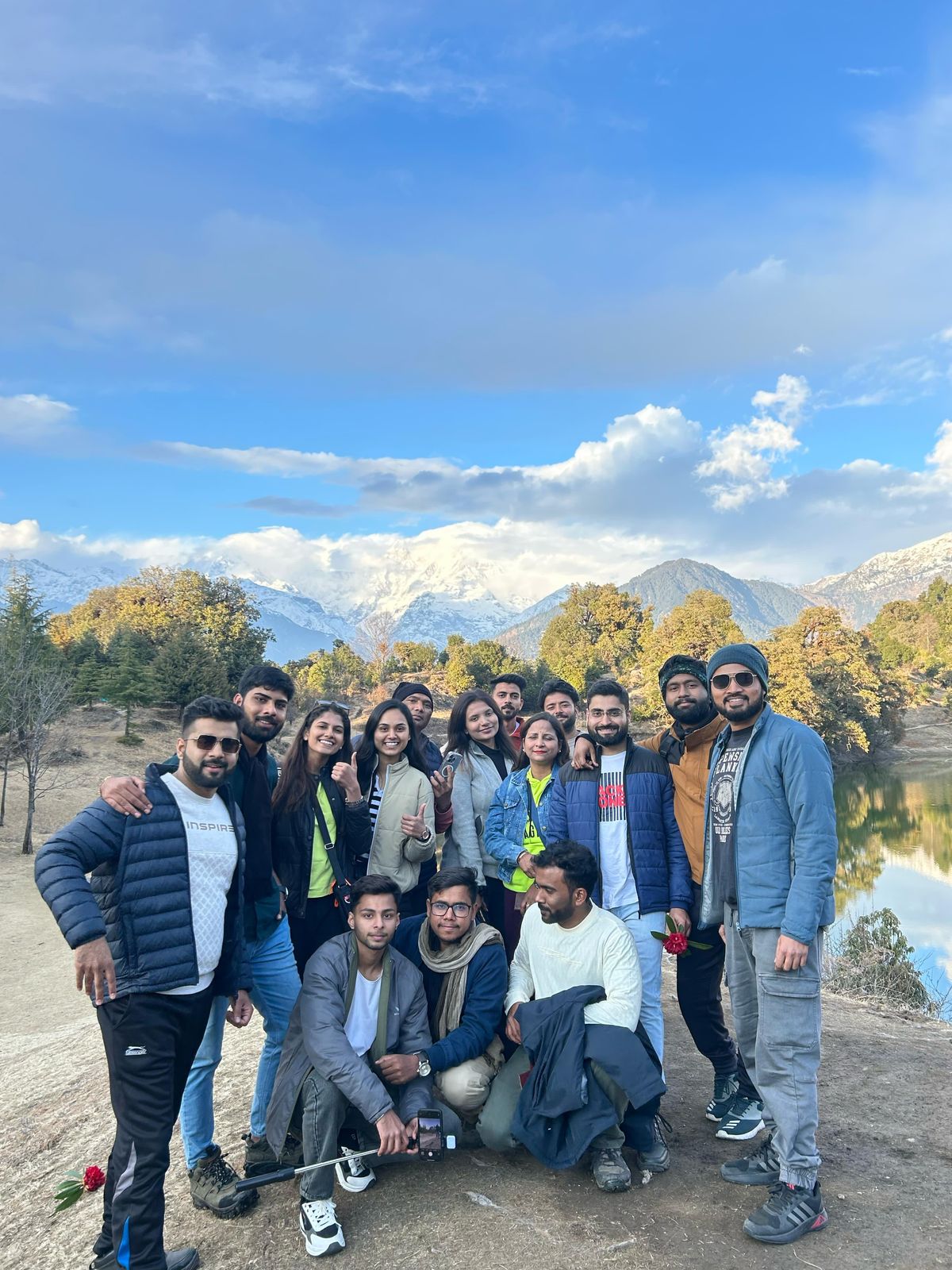
These breathtaking vistas are more than just scenic rewards; they embody the essence of why so many pilgrims and adventurers are drawn to this sacred site. They remind us of the interconnectedness of life, the timeless rhythms of nature, and the enduring power of faith. In this elevated sanctuary, where the divine meets the earthly, every glance at the horizon reaffirms the profound beauty and mystery of existence.
Beyond the Summit: Extending Your Adventure from Tungnath to Chandrashila
While reaching the Tungnath Temple is a monumental achievement in itself, the journey doesn’t have to end there. For those seeking to elevate their experience further, the Chandrashila summit trek beckons with promises of unparalleled views and an exhilarating challenge. Located just 1.5 kilometers beyond Tungnath, Chandrashila stands at an impressive altitude of 4,000 meters (13,123 feet) and serves as the crown jewel of the Chopta Chandrashila trek . This additional leg of the journey transforms an already rewarding expedition into an unforgettable odyssey through some of the most breathtaking landscapes in the Himalayas.
The trek from Tungnath to Chandrashila begins with a steady ascent along a well-marked trail that winds through alpine meadows and rocky terrains. As you climb higher, the landscape evolves dramatically, transitioning from lush greenery to stark, barren expanses adorned with boulders and patches of snow. The air grows thinner, and the temperature drops, but the anticipation of reaching the summit keeps spirits high. Along the way, trekkers are treated to sweeping views of the surrounding peaks, including Nanda Devi , Trishul , and Kedarnath , which seem to grow closer with each step. These vistas become even more dramatic as you approach Chandrashila, where the curvature of the Earth becomes perceptible, and the horizon stretches infinitely in every direction.
Reaching the summit of Chandrashila is a moment of pure triumph. Known as the "Moon Rock," this peak offers a 360-degree panorama that captures the essence of the Himalayas in all its glory. To the north, the majestic Nanda Devi reigns supreme, flanked by her sister peaks. To the east, the Kumaon Himalayas unfold like a vast amphitheater, while to the west, the Garhwal range stretches endlessly. On exceptionally clear days, you can even spot distant landmarks such as Bandarpunch and Swargarohini , adding to the sense of wonder. The summit is often adorned with colorful prayer flags fluttering in the wind, creating a serene and spiritual atmosphere that invites reflection and gratitude.
Descending back to Tungnath and eventually to Chopta brings a sense of closure to the journey, but the memories of Chandrashila linger long after the trek is over. For those embarking on the Tungnath Chandrashila Trek from Delhi , this extension adds depth and variety to the experience, making it a must-do for anyone seeking adventure and awe-inspiring beauty. Whether you choose to include this leg as part of a guided Chopta tour package or tackle it independently, the Chandrashila summit trek is a testament to the boundless wonders of the Himalayas, promising an adventure that transcends the ordinary.
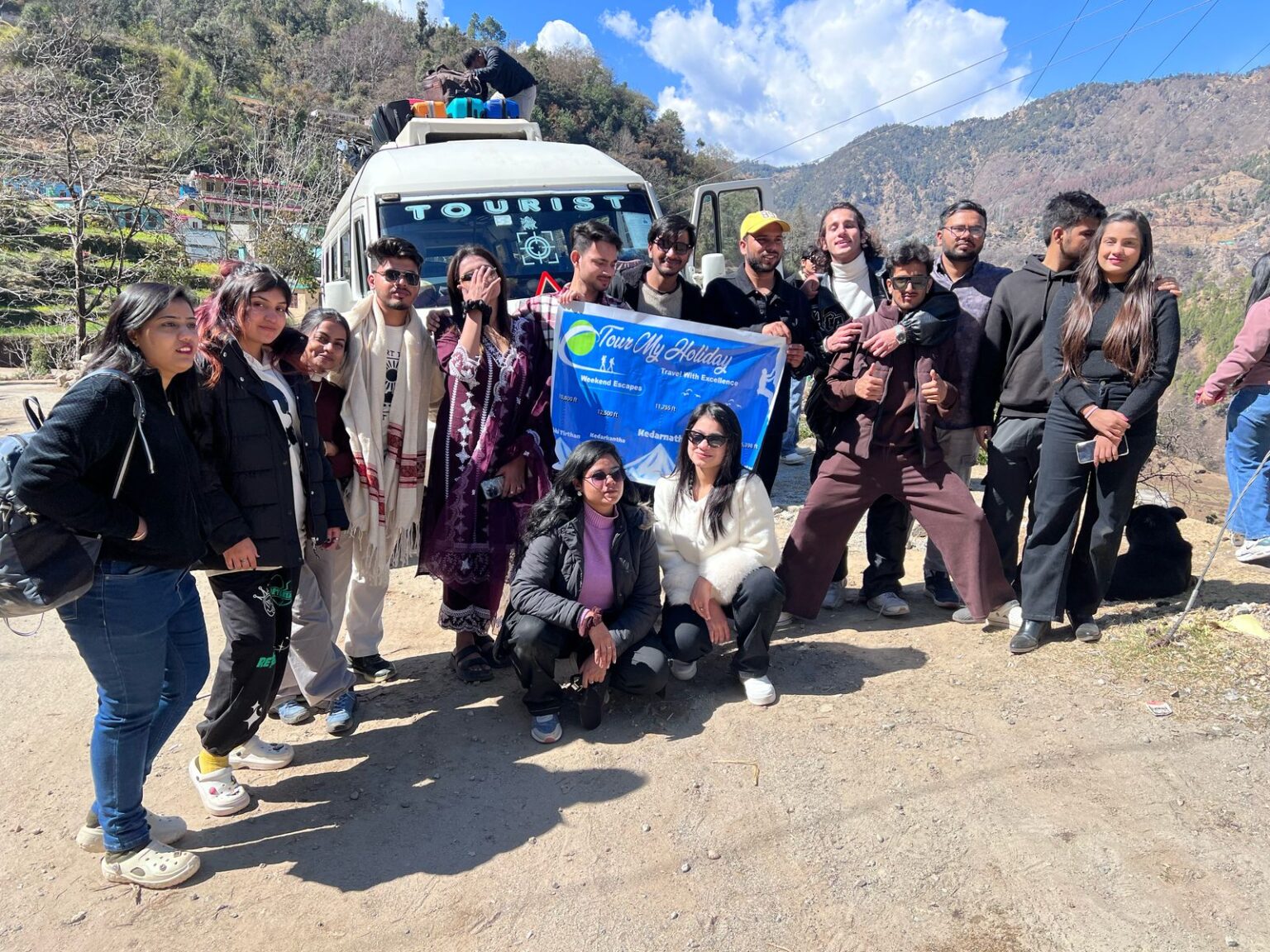
Seasonal Considerations for the Chopta Tungnath Trek: Timing Your Adventure Right
Planning your Chopta Tungnath Trek requires careful consideration of the seasons, as each time of year presents unique opportunities and challenges. Understanding the seasonal nuances ensures that your journey aligns with your preferences and maximizes your experience, whether you're embarking on the Tungnath temple trek , extending to the Chandrashila summit trek , or exploring the broader Chopta Chandrashila trek .
Spring (March to May): Spring is arguably the most enchanting season to undertake the Chopta Tungnath Trek . The snow begins to melt, unveiling lush green meadows and vibrant rhododendron forests that paint the landscape in vivid hues of red and pink. This period offers mild weather, with temperatures ranging between 15°C to 25°C, making it ideal for trekkers of all skill levels. The trails are less slippery, and visibility is excellent, providing unobstructed views of the majestic Himalayan peaks. Additionally, the blooming flora attracts a variety of bird species, enhancing the experience for birdwatchers. Travelers opting for a Chopta tour package from Delhi during this time will find the conditions perfect for a comfortable and visually stunning trek.
Summer (June to August): Summer in Chopta is characterized by moderate temperatures, seldom rising above 30°C, thanks to its elevation. This makes it a refreshing escape from the sweltering heat of the plains. However, the monsoon rains begin in late June and continue through August, bringing heavy showers that nourish the flora but can make trails slippery and challenging. Despite this, the post-rain clarity of the air provides stunning views of the Himalayan ranges, enhancing the appeal of the Tungnath Chandrashila Trek . Care should be taken regarding road conditions and potential landslides during this period, especially for those traveling from Delhi. Proper gear, such as waterproof clothing and sturdy footwear, is essential for a safe and enjoyable trek.
Autumn (September to November): Autumn ushers in clear skies and cool breezes, marking it as another prime time for visiting Chopta. The weather stabilizes after the monsoons, and the landscapes retain their lush greenery while displaying a tapestry of autumnal hues. This season is particularly favorable for photography enthusiasts and those looking to undertake the Tungnath temple trek under pleasant conditions. The visibility is excellent, providing crisp views of distant peaks from the Chandrashila summit trek . The cooler temperatures make it easier to navigate the trails, and the reduced rainfall minimizes disruptions. For those planning a Chopta tour package , autumn offers a balanced combination of comfort and natural beauty.
Winter (December to February): Winter wraps Chopta in a blanket of snow, transforming it into a white wonderland. While temperatures can plummet to below freezing, the snow-covered trails offer a magical experience, especially for those who enjoy winter sports or want to capture the ethereal beauty of the region. However, treks such as the Chopta Chandrashila trek require careful preparation due to the cold and potential snowfall. Travelers opting for a Chopta tour package from Delhi should ensure they have adequate warm clothing and gear. Winter treks demand physical fitness and prior acclimatization, but the reward is a serene and surreal landscape that few get to witness.
Each season in Chopta brings its own unique charm and challenges, influencing the choice of activities and preparation needed. Whether you choose to bask in the floral splendor of spring, enjoy the temperate climate of summer, revel in the colorful foliage of autumn, or embrace the snowy serenity of winter, Chopta promises a memorable experience tailored to your seasonal preferences.

Preparing for the Journey: Essential Tips and Gear for the Chopta Tungnath Trek
Embarking on the Chopta Tungnath Trek requires meticulous preparation to ensure a safe, comfortable, and enjoyable experience. Whether you’re a seasoned trekker or a first-time adventurer, equipping yourself with the right gear and adopting essential safety measures can make all the difference in maximizing your journey. Here’s a comprehensive guide to help you prepare for this awe-inspiring trek, keeping in mind the diverse challenges posed by the Himalayan terrain and varying weather conditions.
Essential Gear: Packing the right equipment is crucial for tackling the rugged trails and unpredictable climate of the region. Start with sturdy trekking shoes that provide excellent grip and ankle support, as the rocky and uneven paths demand reliable footwear. Layered clothing is highly recommended to adapt to fluctuating temperatures—include thermal wear for cold mornings and evenings, moisture-wicking base layers, and a waterproof jacket for unexpected rain or snow. A backpack with a capacity of 30-40 liters is ideal for carrying essentials like water bottles, energy snacks, a first-aid kit, and personal items. Don’t forget accessories such as sunglasses, sunscreen, and a hat to protect against the intense mountain sun, as well as gloves and a warm cap for chilly conditions.
For those planning to extend their adventure to the Chandrashila summit trek , additional gear like trekking poles can aid in navigating steep ascents and descents. A lightweight sleeping bag may also be useful if you’re camping en route, especially during colder months. If you’re traveling as part of a Chopta tour package , confirm whether certain gear like tents or sleeping bags is provided, and pack accordingly.
Safety Measures: Prioritizing safety is paramount when venturing into high-altitude regions like Tungnath and Chandrashila. Begin by checking the weather forecast before setting out, as sudden changes in weather can pose risks. Acclimatization is key—spend a day or two in Chopta to adjust to the altitude before starting the trek. Be mindful of symptoms of altitude sickness , such as nausea, dizziness, or headaches, and descend immediately if these occur. Carry a basic first-aid kit containing medications for common ailments, blister treatment, and pain relievers.
It’s also advisable to trek with a companion or join a guided group, especially if you’re unfamiliar with the region. Local guides not only enhance your experience with insights into the flora, fauna, and cultural significance of the area but also ensure your safety by navigating the best routes. For solo trekkers, share your itinerary with someone reliable and keep emergency contact numbers handy. Mobile network coverage is available in most areas, but carrying a portable GPS device or map can be invaluable in case of signal loss.
By meticulously preparing your gear and adhering to safety protocols, you’ll be well-equipped to tackle the challenges of the Chopta Tungnath Trek and fully immerse yourself in the breathtaking beauty of this sacred journey. With the right mindset and preparation, every step of this trek becomes a celebration of nature, adventure, and self-discovery.
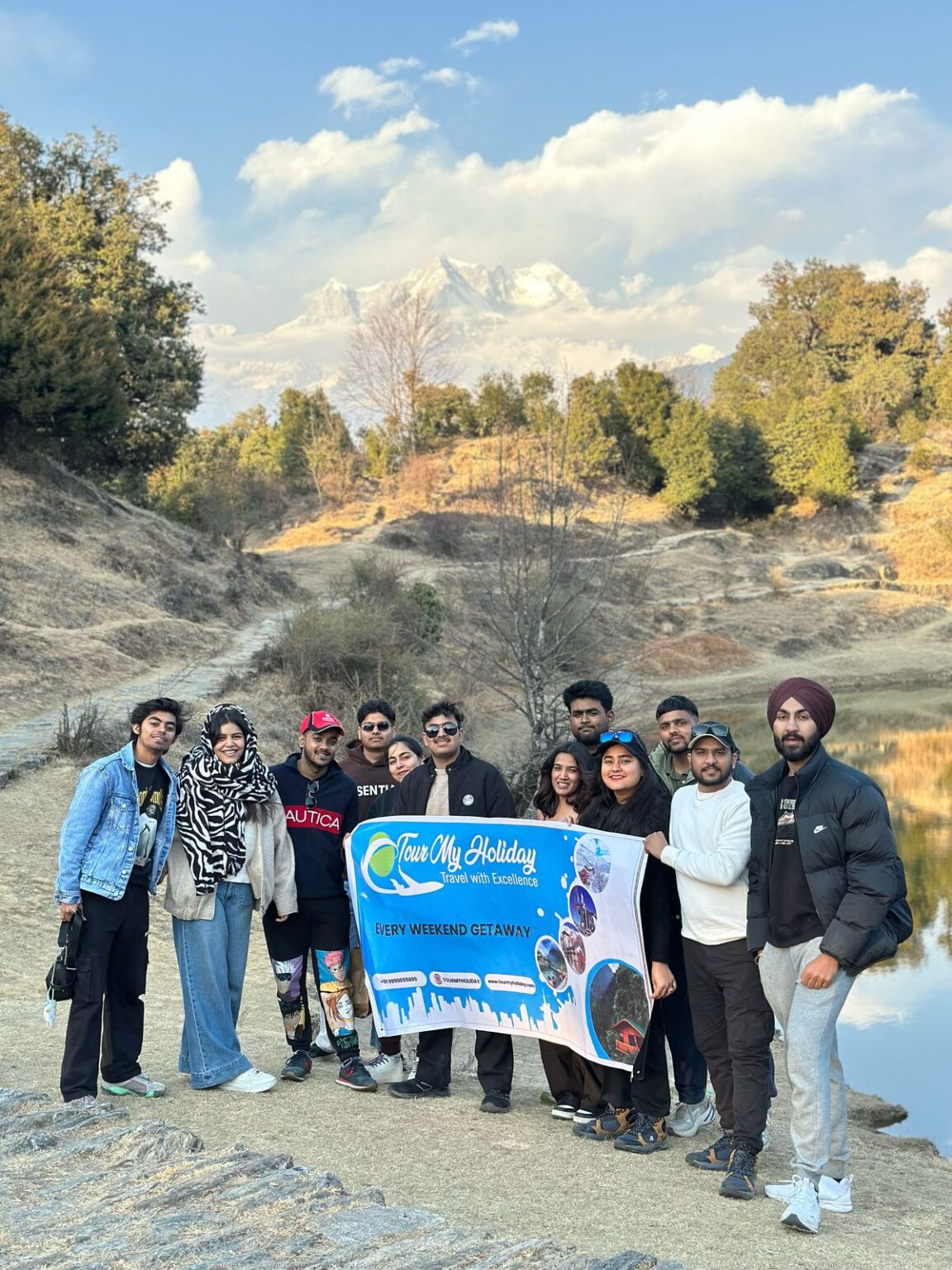
Frequently Asked Question(FAQ)
How many kilometers from Rishikesh to Chopta?
Distance Between Rishikesh to Chopta Is 164 Kms , Duration, Driving Directions & Route Map.
Is Tungnath safe to visit?
April to November is the best time to visit Tungnath. During summers the town is in full bloom, and the air is fresh and crisp. The peaks are covered with a lush green cover of pine deodar and rhododendrons. During monsoon, the place becomes prone to landslides, so it is recommended to be avoided.
How to reach Chopta from Delhi?
There is no direct connection from New Delhi to Chopta. However, you can take the bus to Samas Pur Jagir, take the bus to Rishikesh, then take the taxi to Chopta. Alternatively, you can take the train to Kotdwara then take the taxi to Chopta.
How much is the bus ticket from Haridwar to Chopta?
A bus ticket from Haridwar to Chopta can cost between INR 400–800 per person, depending on the type of bus and the operator.
Why is Chopta Valley famous?
Nestled in the Himalayas, Chopta offers pristine and clear views of the Nanda Devi, Trishul and Chaukhamba peaks. It is particularly known for being home to the five most sacred temples dedicated to Lord Shiva – also known as Panch Kedar.
How many days are required for Chopta?
How many days are sufficient to explore Chopta? To explore Chopta and its nearby surroundings at a relaxed pace, one would need 3 days minimum as there are plenty of places in and around Chopta. Few of the must visit places are Tungnath temple, Devaria Tal, Chandrashila, Ukhimath etc.
Where is Auli Chopta?
Chopta Auli tour is an adorable tour to the foothills of Himalayas where you will explore the imposing beauty of two beautiful destinations Chopta and Auli. Both are situated above 2500 metres above the sea level in the Garhwal range of Uttarakhand.
Is Chopta Trek difficult?
The Chopta Chandrashila and Chopta Tungnath treks in Uttarakhand are considered moderate difficulty treks. They are suitable for beginners and experienced trekkers alike.
.jpeg)
